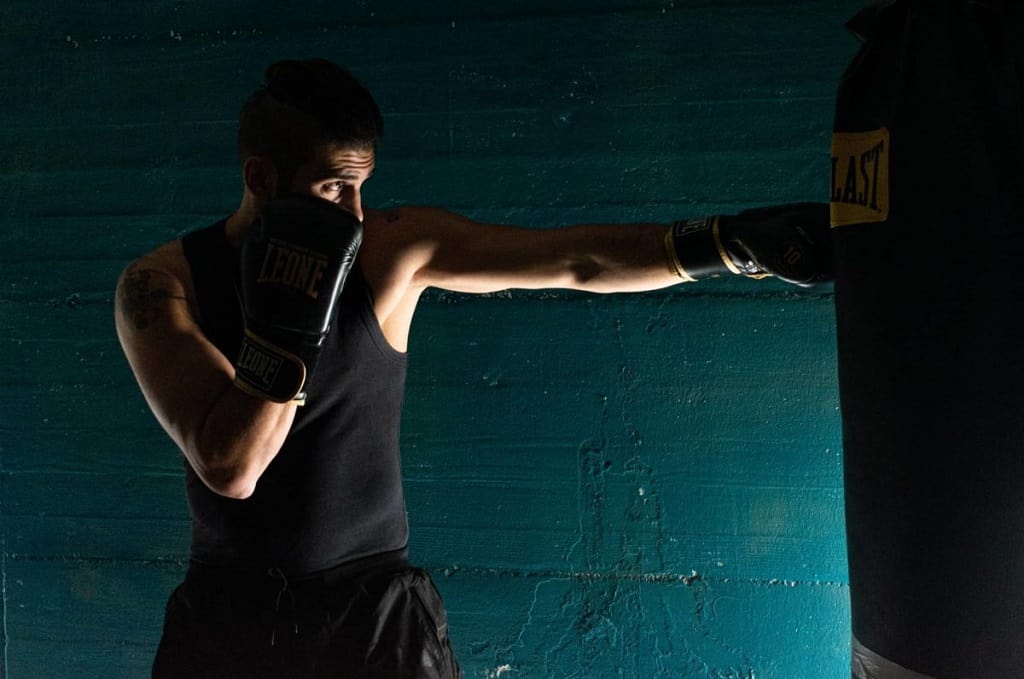
Welcome fellow Warriors! Lately I’ve been keen on learning more on the sport of boxing, as I’m on a fitness journey and I’m using boxing for fitness purposes to get in the best shape of my life.
So as you probably already know, boxing is a sport where you score points by striking your opponent with punches as well as dodging and avoiding punches from your opponent. But what kind of punches are there?
There are different kinds of punches in boxing. they include basic punches like jabs, crosses, hooks, and uppercuts, as well as punches with more variety like lead punches and rear punches that can be used in different combos. The different combos use a number system, with each number corresponding to different punches. So when your trainer calls out numbers, like 1-2, or 1-2-3, or 2-3-2, you throw the punches that corresponds with said numbers.
I am personally still learning about the number system, but I feel that I have the basic moves down (I am a beginner still learning). If you’re ready to learn more about different boxing punches and combinations, read on and we’ll learn more together!
Basic Punches
There are 4 basic punches that all boxers know how to do:
- JAB: A straight punch with the land hand
- CROSS: A straight punch with the rear hand
- HOOK: A punch that curves to the left or right (left hook, right hook)
- UPPERCUT: A punch that curves upward, underneath the opponent’s guard
There are other variations of the 4 basic punches, as well as other punches too.
Other Punches
While doing my research, I learned that according to Six (6) Basic Punches Every Boxer Needs to Know by Fight Camp, The Six Basic Boxing Punches Used in Boxing and Boxing Classes, by PunchFit, Improve Your Boxing Performance with These Boxing Combinations, by Quiet Punch, 6 Basic Boxing Punches and How to Throw Them Correctly by Punching Bags Guide, and 5 Different Punches Every Boxer Should Know by Extreme Strikers, there are other variants of the basic punches I mentioned earlier.
- RIGHT JAB: A jab with the right hand, with the right hand leading and the left hand in the rear (left-handed stance)
- LEFT JAB: A jab with the left hand, with the left hand leading and the right hand in the rear (right-handed stance)
- RIGHT CROSS: A cross with the right hand, with the left hand leading and the right hand in the rear
- LEFT CROSS: A cross with the left hand, with the right hand leading and the left hand in the rear
- LEAD HOOK: A hook with the leading head that curves left or right, depending on which hand is leading
- REAR HOOK: A hook with the rear hand that curves left or right, depending on which hand is leading
- LEAD UPPERCUT: An uppercut with the leading hand that curves upward, depending on which hand is leading
- REAR UPPERCUT: An uppercut with the rear hand that curves upward, depending on which hand is leading
Number Patterns
I learned that according to Quiet Punch, the different punches are numbered so that you can memorize them in a pattern to use combos.
Here are the different numbered punches.
- 1. JAB
- 2. CROSS
- 3. LEAD HOOK
- 4. REAR HOOK
- 5. LEAD UPPERCUT
- 6. REAR UPPERCUT
- 7. LEAD HOOK TO THE BODY
- 8. REAR HOOK TO THE BODY
- 9. JAB TO THE BODY
- 10. CROSS TO THE BODY
So this number system is used by boxing trainers to help train their fighters with performing different punch combos. When a trainer calls out a sequence of numbers, fighters have to repeat it and execute the corresponding punches. It’s like playing a game of Simon Says, with boxing.
According to the Fight Camp blog, there is another key component to the numbers of the punches. The odd numbered punches use the left hand, whereas the even numbered punches use the right hand.
How the Punches Relate to Your Stance
I learned this while I was at my first boxing class; the hand that leads should be your non-dominant hand. For example, if you are left-handed, your right hand leads and your left hand is behind. If you are right-handed, your left hand leads and your right hand is behind).
This means that jabs are always done with your non-dominant hand and crosses are always done with your dominant hand (left cross if you are left-handed, right cross if you are right-handed)
I also learned that your stance should be where your upper body is facing the side of your dominant hand at a 45 degree angle (for example, if you are right-handed, your upper body should be aligned to your right, and vice versa if you are left-handed), with your weight on the balls of your feet (as if you’re standing on your tippy toes)
How the Punches are Done Properly
The most important thing to remember about throwing punches is doing them with proper form. I learned from my trainer that you should not make it a habit to throw haymakers, as you will throw your arm out and injure your shoulder (it risks you dislocating your shoulder or tearing your rotator cuff). You also don’t want to fully extend and lock your elbow, which can also result in injuring yourself.
My trainer also taught us that want to keep your hands, or your guard, up so you can be ready to strike and to protect your face. So your guard should be where your knuckles are just under your eyes. You want to protect your face, but you also don’t want to lose sight of your target.
Jab
A jab is a straight punch with your lead hand, usually at eye level. Keep your rear hand up in a striking position at all times in case you decide to follow up your jab with a cross. And to protect your face from your opponent’s blows.
Remember to watch the extension of your arm. Do not fully extend it, as that could risk injury. When you do this, your lead hand should be the only thing that moves.
Cross
A cross is a straight punch with your rear hand, also at eye level. When you do this, you want to turn your upper body from a 45-degree angle to where you’re now facing your target directly. Pivot with your rear foot. Your lead foot does not move.
You should keep your core engaged when you do this. It’s all in the hips and the waist with rear-handed punches. It will help keep you stable and will help with your posture.
Lead Hook
A lead hook is a curving punch with your lead hand, depending on the position of your stance. Just like a jab, your leading arm should be the only thing that moves. Your feet and your rear hand do not move.
Even though your arm is slightly bent so that you can throw a curved punch, be careful to not throw your arm too far to your opposite side, or you will throw your arm out. My trainer taught us that when you throw a hook, you want to stop your arm when your knuckles are in line with your nose.
Rear Hook
A rear hook is a curving punch with your rear hand, once again depending on the position of your stance. Just like a cross, your torso should turn towards your target and pivot with your rear foot. Your lead foot stays stationary. Remember to engage your core.
Lead Uppercut
A lead uppercut is a punch that curves upward with your lead hand. Just like with a hook, just because your arm is slightly bent doesn’t mean your arm is at risk of being injured due to improper form. When you’re doing an uppercut, make sure you don’t throw your arm too high over your head, as you can still throw your arm out and injure your shoulder.
Personally, I would recommend you stop your arm when your knuckles are about in line with your nose. Just like with a hook, only your blow is curving up and not to the side.
Rear Uppercut
A rear uppercut is a punch that curves upward with your rear hand. Like all rear-handed punches, remember to turn your hips and pivot with your rear foot, while your lead foot is stationary. And remember watch your extension.
Closing Words
Now you know just about all there is to know about the different kinds of punches in boxing and how they are done properly. Now you’re ready to get gloved and hit it hard in the ring! If you know of any other punches for boxing, put them down below in the comments! Happy training and LET’S GO INTO BATTLE!

